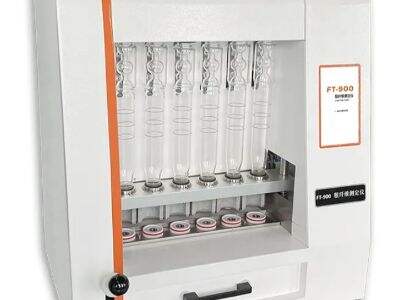Ever wondered how light travels through different objects? Light is everywhere and travels in straight lines. However, when it travels through objects such as glass or water, it doesn't travel straight, but rather bends! The direction change is what is termed as the Labtech refractive index sensor. In proper words, a refractive index sensor is a special device that can sense the level of light deviation as it moves through a substance. This sensor lets scientists know what a liquid or solid is made of, even if they can't see it. This is very important for so many types of work. How do refractive index sensors work?
So how does a refractive index sensor work?
This typically involves a glass prism—a piece of glass that transmits, or bends, light. The double junction electrode path of light changes as it enters the prism since light hits the glass at an angle, which is what causes light to refract. How light bends depends on the material in which it travels. For example, light bends differently in water and in glass. They can also decide what material they are looking at by measuring just how much the light is bent. This is a bit like a puzzle, where the bending of light is used to provide information about the material. Refractive Index Sensor: To measure the properties of light Refractive index sensors are a bit different; they make use of an effect called total internal reflection (TIR) to measure the degree of bending.
Rather than bending, the light bounces back as it strikes the surface of the material at a specific angle.
Just like a ball causing a bounce off a wall! Scientists are able to measure the angle in which the light is reflected and can therefore deduce how much the light was bent before the reflect. "With the optical dissolved oxygen meter distance that the light bent, they is ble to compute the refractive index of the material, which allows them to find out more about what the material is made of." Advantages and Disadvantages of Refractive Index Sensors Refractive index sensors are very useful devices.
They can tell you what something is made of without having to see it firsthand.
This is incredibly useful in all fields, from food safety to cod bod analyzer medical research to materials science. For instance, scientists are able to ensure that drinks such as juice and soda are the proper concentration and not watered down. However, with these Labtech refractive index sensors, some limitations apply, such as function only on clear substances; among them, those are the fluids and semi-solid. Material that is non-clear can never be measured through the sensor, and also that refractive index sensors do not divulge a product's actual chemical composition; what basically define is the characteristic of the how light would bend as it pass through. Uses of Refractive Index Sensors in the Real World The majority of industrial sensors based on the refractive index find their application in diverse fields such as agriculture, pharmaceutics, and biomedical that aid scientists and researchers significantly. One prominent application is in food safety.
But scientists can determine whether drinks — like juice and soda — have been diluted over the legal limit, and whether they're safe to drink, by checking the refractive index of the drinks.
In medical research another use. Measuring the Labtech refractive index sensor of cells will help scientists understand more about what they are made of and how they operate. This will help them better understand diseases and how to treat them. In materials science, refractive index sensors are used to measure materials such as glass and plastic to ensure quality and proper function.
 EN
EN
 AR
AR BG
BG CS
CS DA
DA NL
NL FR
FR DE
DE EL
EL HI
HI IT
IT JA
JA KO
KO PL
PL PT
PT RO
RO RU
RU ES
ES SV
SV CA
CA TL
TL IW
IW ID
ID SR
SR SK
SK VI
VI ET
ET HU
HU TH
TH TR
TR FA
FA AF
AF MS
MS GA
GA MK
MK BN
BN BS
BS LA
LA MN
MN NE
NE

